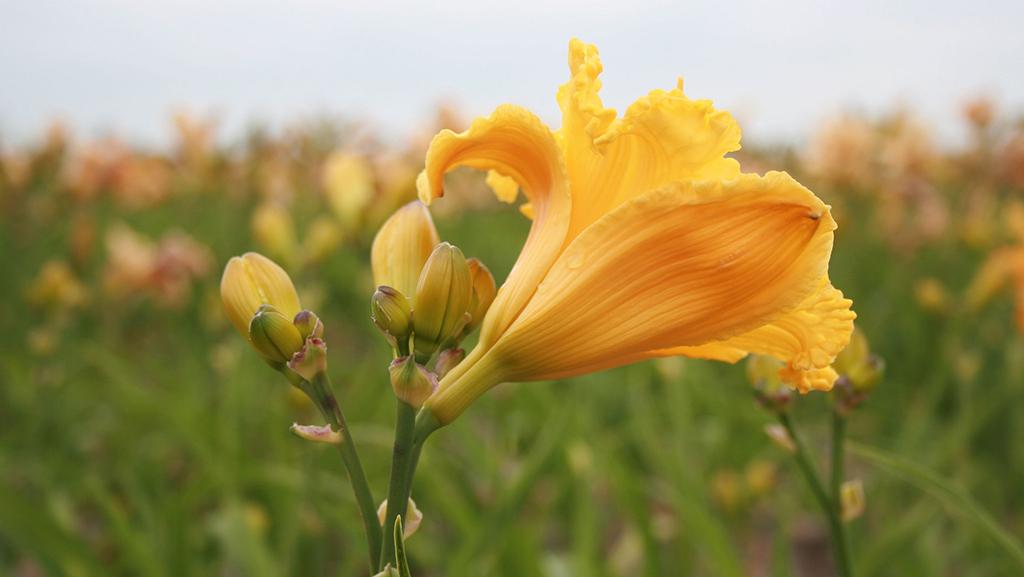Daylilies are a mainstay in gardens around the country, and for good reason. They are versatile, easy-going, and absolutely beautiful. Plus, they offer quite a bit of usefulness in the garden (more on that in #2). They are so widespread and well-known across the country. Many people have written them off as common, albeit beautiful, plants. The truth is, these gorgeous perennials are far from ordinary. Get the dirt on why these perennials are much more interesting than you think below.
By the way, there are tons of bonus facts sprinkled throughout the post; can you find them all?
1. Daylilies Are One of The Most Adaptable Plants in the World

Did you know that daylilies are one of the most adaptable flowering plants in the world? There are daylilies that thrive in zones 2 through 11. Many varieties are happy in Zones 4-11, which is a larger range than most perennials. Daylilies are very cold-hardy, as well as heat-tolerant.
On top of being adaptable to temperature ranges, they thrive in a wide variety of climates. They're a great choice for hot, dry climates, as well as cool, moist ones.
And soil conditions? Daylilies are happy in almost all of them. From heavy clay to fertile loam to dry low-fertility soil, daylilies can thrive in surprising places. You'd be hard-pressed to find a plant that performs so well in a wide array of soil and climate conditions.
Pictured left: Blazing Skye™ Daylily can be grown in zones 4-11 and thrives in a variety of soils.
2. Daylilies Provide Excellent Erosion Control
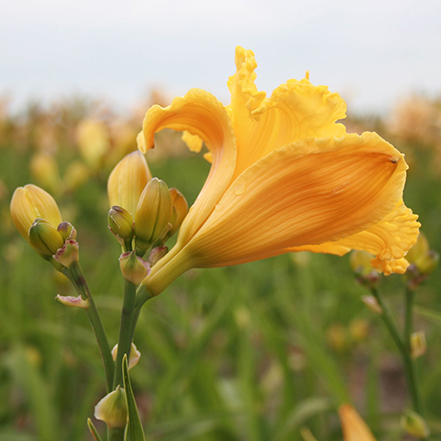
Daylilies to the rescue! Not only are they a low-maintenance and beautiful perennial, but they are also quite useful in a tough spot. Many daylily varieties spread easily and are used as colorful groundcover and weed control.
Plus, the thick tubers of daylilies form a dense web underground that holds soil in place, even on steep slopes. Their thick, tuberous roots spread out like strong fingers and keep a tight grip on soil in nearly any location.
You can use practically any variety of daylily to act as a soil stabilizer. The steepest slopes might call for the tawny daylily, hemerocallis fulva, which naturalizes easily in zones 3-9. This is the most widespread variety in the wild. It can often be found growing happily on old homesteads, roadsides, and alleyways.
Pictured left: Saffron Skye™ Daylily has butter-yellow flowers with ruffled edges. It grows from tubers like all other daylilies.
3. Daylilies Look Amazing in Containers
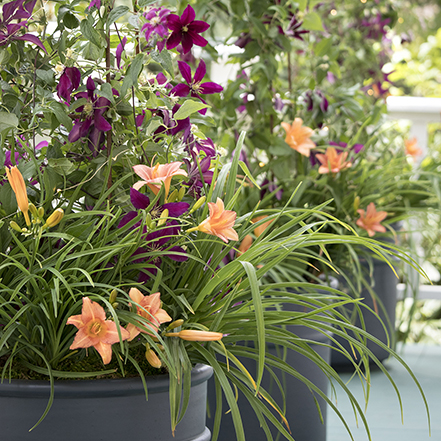
Did you know that daylilies make great container plants? You're not alone if this daylily fact comes as a surprise. Most of us have only ever seen daylilies as a cornerstone in the garden. But their laid-back nature and dependable bloom also make them great for container plantings.
The long, grass-like foliage cascades over the sides of containers. Plus the tall wands of the flowers add height, and their dense growth habit perfectly fills a container. These aspects make them spectacular thrillers, fillers, and spillers all at once.
The key to showcasing daylilies in containers is matching the type with the proper pot size. Dwarf daylilies (pictured left) will require containers between 12-15" in diameter, while larger varieties require containers up to 24" wide.
Pictured left: EveryDaylily™ Pink Wing planted in a container with a gorgeous Boulevard™ Acropolis™ Clematis climbing up a trellis.
4. There Are Over 80,000 Varieties of Daylilies
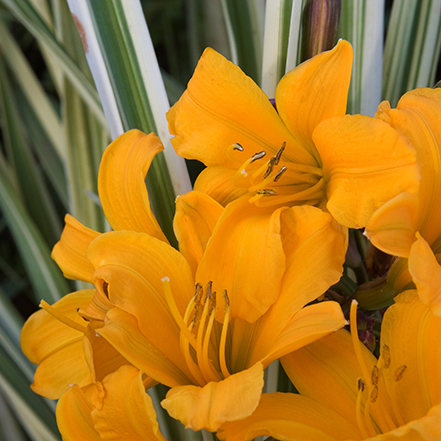
Daylilies are native to almost the entire Asian continent. By the 18th century, they made their way to Europe and quickly became popular with plant enthusiasts there. European immigrants brought daylily tubers with them to the New World. The flowers naturalized in their new home by the early 1800s.
A hundred years after daylilies were brought to America, botanists were experimenting with developing hybrids. (Botanists including the daylily-breeding pioneer from Wisconsin, Arlow Stout). These were from the wild varieties that had taken hold around homesteads. The incredible adaptability and dependability of daylilies led to extensive breeding over hundreds of years.
Now, over 80,000 varieties of daylilies are said to exist, with more being developed every year.
Pictured left: The Golden Zebra daylily, which shows off boldly striped foliage and deep-orange flowers.
5. Daylilies are Not Actually Lilies
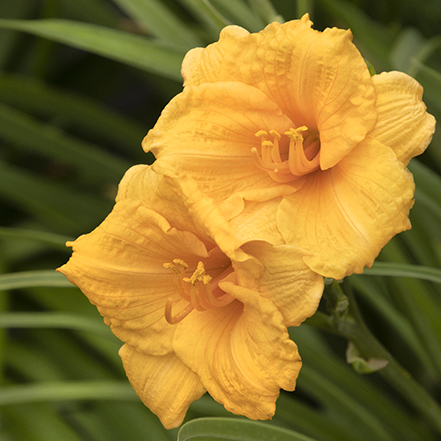
There is still a lot of confusion floating around out there about where daylilies belong. The fact is that they are not actually lilies! Daylilies are in the genus Hemerocallis, which is a member of the family Asphodelaceae, and subfamily Hermocallidoideae. True lilies, on the other hand, are in the genus Lilium, family Liliaceae, and subfamily Lilioideae.
So, when you're shopping for daylilies, you'll notice this. All of the botanical names will start with that genus name "Hemerocallis," no matter the type. You know you're looking at a true lily if the botanical name starts with "Lilium."
It's also important to note that this is where some confusion about the edibility of daylilies comes into play. True lilies, in the genus Lilium, are quite toxic to humans and animals. Whereas the widespread orange daylily, Hemerocallis fulva, has been known to be edible for generations.
Pictured left: Endlesslily® Orange Daylily is a compact, everblooming variety that looks great in containers and gardens.
6. Daylilies Are Drought Tolerant
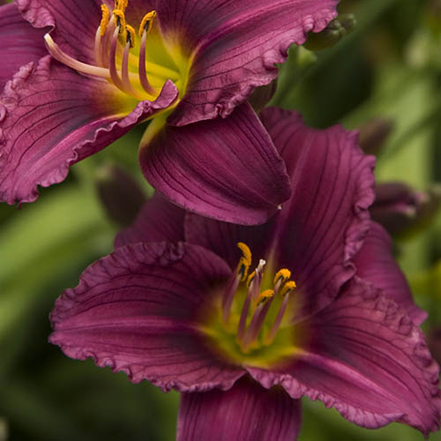
There are not many waterwise perennials out there that have the lush foliage and abundant bloom of a daylily. When you browse daylily varieties, you'll notice that every single one is designated as having "low" water needs.
If you live in an area that experiences consistently dry summers or occasional droughts, add some daylilies to your garden. They provide dependable color and verdant foliage through even the hottest, driest summers.
The key to Daylily's water thriftiness is once again its tuberous roots (see #2). These can store enough nutrition and moisture to get it through periods of drought.
Pictured left: Little Grapette Dwarf Daylily is a dwarf variety with rich purple blooms. Like other daylily varieties, it needs little water to thrive.
7. And They Also Don't Mind Getting Their Feet Wet
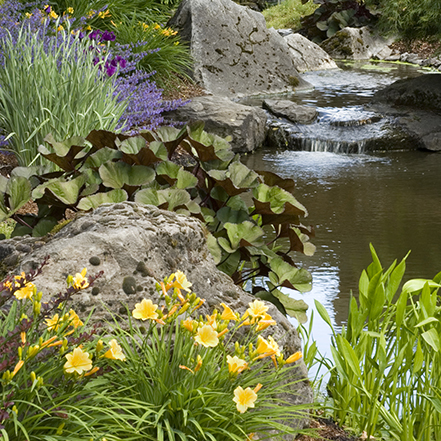
It's true that extended periods of overwatering can lead to root rot in daylilies. Considering how waterwise these plants are (see #5), it's amazing how well they do in wet conditions. Usually, plants with low water requirements despise getting their feet wet. Not so with the daylily.
Don't write off the daylily if you live in an area with consistent summer rain. Or if you're in an area that experiences its share of soggy conditions. Most varieties hold up well in these conditions and will thrive with the extra water.
Daylilies are a great choice for adding a punch of color to water-side gardens like the one pictured here. Plus, they will provide the erosion control many water-side locales require (see #2).
Pictured left: Stella de Oro Dwarf Daylily looks spectacular. Especially in a moist water-side setting with other plants that thrive near water.
8. There Are Reblooming and Everblooming Varieties
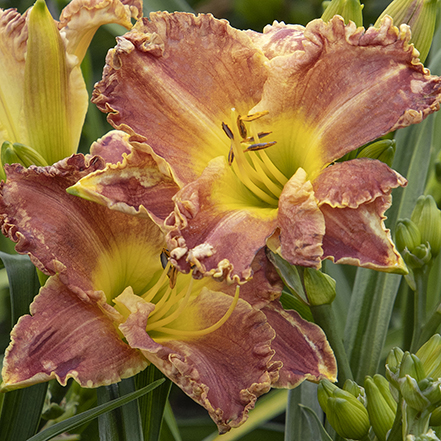
Daylilies get their name from their flowers, which typically bloom for a day before being replaced by a new one. Most varieties have a flush of flowers in the summer and bloom for about a month. But new varieties break all the rules.
Reblooming daylily varieties, like Happy Returns Dwarf Daylily, have two periods of bloom. Usually, reblooming varieties will bloom through late spring or early summer. They'll stop blooming and then bloom again in late summer or early fall.
Titan Skye™ Daylily, pictured left, is a particularly robust bloomer. It's flowers last up to ten days, and the blooms just keep coming. Everblooming (aka continuous blooming) varieties like Skye™ and Endlesslily® produce flowers continuously throughout the spring and summer, with no pause.
These extended-bloom varieties offer a solution to the short bloom time of other daylily varieties. They provide more color in the garden for far longer.
Pictured left: The Titan Skye™ Daylily from the Skye™ Daylily Collection. These continuous-blooming daylilies have large, long-lasting flowers with ruffled edges.





